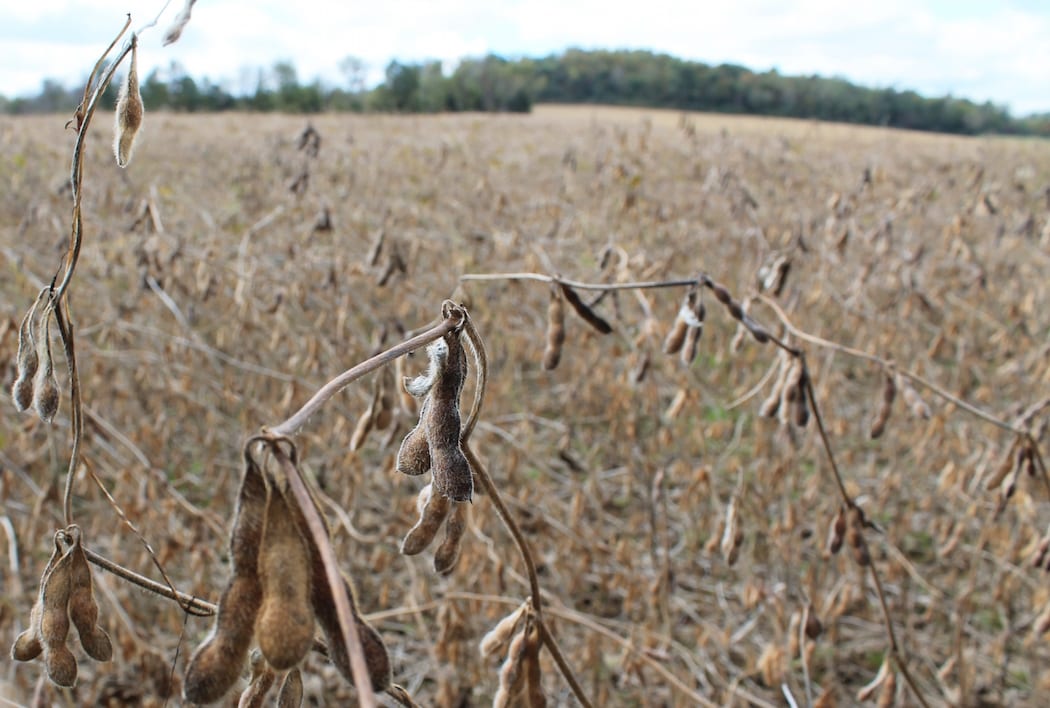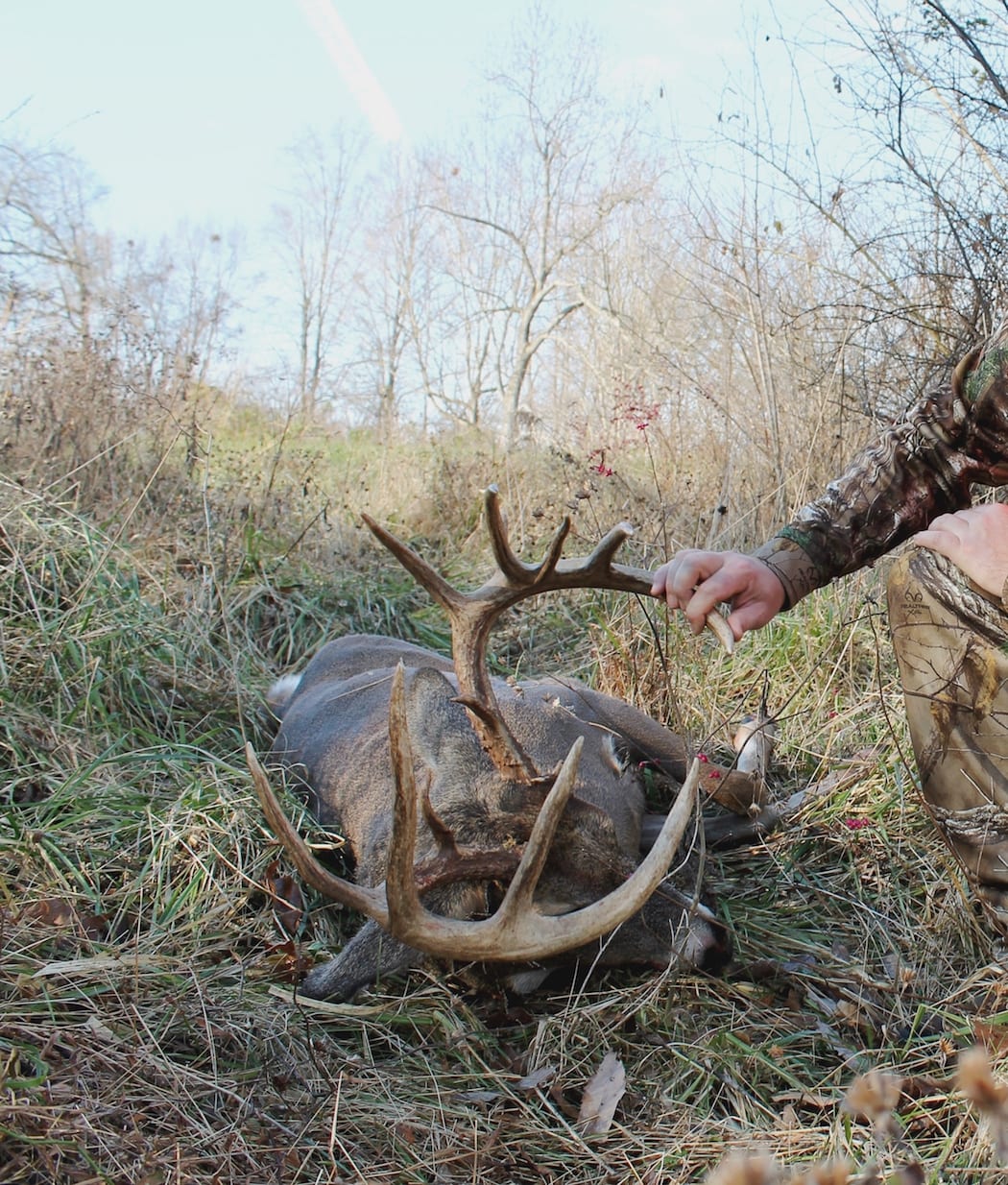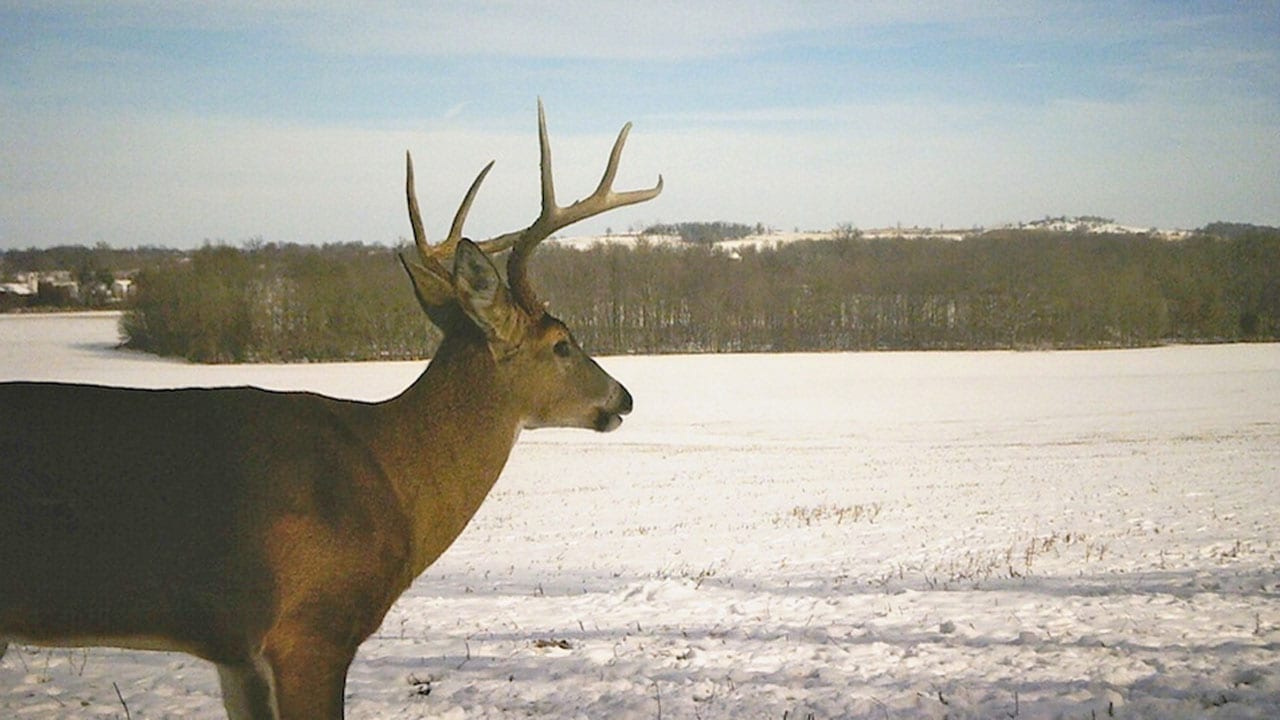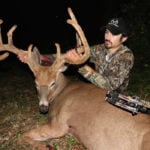To be more successful on late season deer, seek out late-season big-buck lairs, use proven methods for hunting them, and know how to kill a mature buck you just spooked. Because we’re often our own worst enemy when pursuing mature whitetails, and it pays to have our bases covered.
Late-Season Buck Lairs
I’ll never forget the time that I watched a giant buck stand up and ease its way out of a small brush pile. I was dumbfounded. I was overlooking some of the best security cover known to deer right in front of me. But this giant buck — which I’d never seen — had chosen a 20-foot (in diameter) brush pile as its daytime bedding location instead.
I’ve learned a lot from such encounters. It’s because of incidences like those why I’ve changed my view about mature bucks as well as why I’ve adapted my hunting tactics throughout the years. Every buck has its own personality. And what might work for one deer won’t be effective for another. One buck might follow the south slope script while another may never step foot on one.
The key thing to remember when scouting in January for late-season deer is security. Bucks are seeking out the last remaining spots where they feel secure. Traditional places to focus on include sanctuaries, uninvaded woodlots, big timber, cedar groves (and pockets of other coniferous trees), cover adjacent to big crop fields, deep ravines, south-facing slopes, etc. While these can be solid choices for a late-season stand site, you must remember these are the type places other hunters are focusing on, too. Which leads me to my preferred late-season lairs.

Look for cover and bedding areas adjacent to ag fields when looking to fill a late season buck tag.
I tend to not be conventional. So I usually focus on unconventional locations unless scouting efforts suggest otherwise. Some of these unconventional locations include: brush piles, fingers of trees, small woodlots, old home places, ditches, drainages, clumps of grass, swamps, islands of cover, and any other overlooked hotspot I can find. You’ll notice a trend with these places — they’re frequently overlooked by other hunters. And that’s what makes them so desirable to deer during the late season. Deer haven’t been pressured there yet.
In the end, we have to scout for deer where we think they are. Sometimes these are conventional locations. At other times unconventional locations reign supreme. But carefully scout both so you can hunt the late season with confidence.
Last-Ditch Tactical Approaches for Late Season Deer
As the last-remaining leaves loose from the limbs and twirl to the ground, so does the last-remaining tolerance of human intrusion leave the mind of a white-tailed buck. Because of that, we have to use just enough aggression to get the job done, but not so much that we spook deer before ever seeing them. There are several ways to accomplish this.
The setup-and-wait game plan is king throughout most of the country. This is still a favored late-season tactic among hunters. It’s low-impact and runs less risk of alerting deer to your presence. Simply (pun intended) determine where your target deer is bedding (whether a conventional or unconventional location), find the food source it’s feeding on (ag fields, remaining acorns, green food plots, woody brows, etc), and get between the two.
It’s coming down to the wire and hunters are feeling the pressure to close the deal. So some hunters choose to still-hunt and stalk during the late-season. It’s high-pressure and high-risk. But it’s an effective tactic, too. And what do you have to lose? There are only a handful of days left in the season, anyway.
When implementing this tactic, I prefer to focus on the best late-season bedding area I can find and slowly ease my way through it, stopping every few feet to glass around me. Don’t expect to see the whole deer, either. Instead, look for the tip of a tine, flick of the ear, or a mouth chewing its cud. I once spotted a deer because of three inches of tine, but it ended up having way more than just three inches attached to its head.

Whether you’re slipping through the cover or making a push to hunters on stand, there are late season options that will get the job done.
Other hunters prefer to do deer drives. It can be more difficult if you’re bowhunting, but it’s still doable. And with only a few days left, what do you have to lose?
Deer drives are very effective when they work right. To do one, set up on a field edge downwind of a bedding area. Then, have one or two people (more than that complicates things) start upwind of the bedding area and slowly zigzag back and forth through the cover. Those conducting the drive should move slowly, almost as if still-hunting. They’re hunting, too. The goal is to allow the wind to push the deer, not sound or sight of a hunter. The goal of the “soft push” is to have the deer slowly exit from cover and head to another bedding location. Then, the hunter on stand will have a better chance of stopping the deer for a shot. But if the “pushers” get a shot on a deer that hasn’t detected them, they’ve earned it. The No.1 thing to remember — safety comes first and foremost. Always know which direction you can and can’t shoot toward and wear hunter orange when conducting deer drives.
In the end, deer hunters see way more bucks than they ever get a shot at. Hunters often see bucks from afar and think to themselves, “Man, I sure wish that deer was closer.” And then they watch it slowly walk over the horizon. I say none of that. That’s when a hunter should be getting out of the treestand or ground blind and going after that deer. Swing (wide) downwind of the buck, and fill that tag. Make sure you stay out of that deer’s line of sight as you move from point A to point B, and always be aware of other deer that could spoil your approach.
Kill a Bumped Buck
Sometimes we accidentally bump bucks. It happens. And when it does, most hunters don’t do anything. Instead, they pout, scratch their head, and say, “Maybe next year.” Heck no. That’s not the proper reaction to a spooked buck. Instead, run after those open-country deer and get ahead of those studs. Then kill them.
I know. It’s easier said than done. But it can be accomplished. In most cases, once they’ve crossed a field and feel as if they’ve reached secure cover, deer move fairly slowly again — especially during the late season. They are on high alert and very cautious as they slowly pick their way across the landscape. This mean you should be, too. Read every situation independently and act accordingly. But in most cases, you should move slowly as you try to get ahead of the deer.

Don’t give up when you bump a buck across open country.
When hunting open landscapes with pockets of cover, I try to get ahead of the deer and start on the opposite side of the woodlot the deer headed toward. They’ll generally stay in the next patch of cover they go into as long as they feel safe there.
As for hunting in big timber, things aren’t always the same. I’ve come to realize that bucks behave slightly different. If you bump a deer, but it didn’t fully realize what you were, they sometimes get curious. After they’ve bolted from their beds, they’ll often run a ways and then circle downwind — in a fish-hook shaped fashion — to see what you are. Knowing this, move ahead as soon as the deer is out of sight, get into position, and prepare to fill that tag.
The late season is a bear to overcome, but it offers a style of hunting unlike the rest of the year. And after a long deer season, there’s nothing more rewarding than punching a tag right at the buzzer. If you’re still carrying a buck tag, keep hunting and score on an old wary whitetail. You won’t be sorry, but the buck will.

 By
By 



